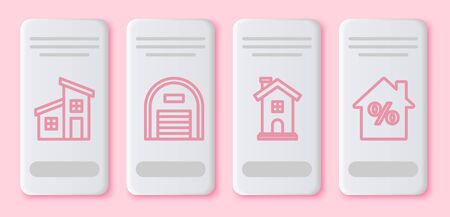1. Understanding the UK Winter Climate & Heat Pumps
The British winter is a season marked by dampness, lingering chills, and unpredictable temperature drops. Unlike many other regions, UK homes face not only cold air but also persistent moisture and wind that can infiltrate even the most robust structures. This unique climate means that keeping interiors warm isn’t simply about cranking up the thermostat—it’s about creating a well-insulated sanctuary that stands resilient against the elements. Heat pumps are growing in popularity across the UK for their ability to provide efficient, sustainable warmth. However, their performance is intimately tied to how well your home retains heat. Without thoughtful insulation, much of the energy produced by your heat pump can be lost to draughts and thermal bridging, leading to higher energy bills and less comfort. Thus, understanding the interplay between Britain’s wintry conditions and modern heating technology is essential for crafting homes that are both snug and energy-efficient.
Assessing Your Current Home Insulation
Before you embark on the journey of optimising your home for efficient heat pump use, it’s essential to thoroughly evaluate your existing insulation. British homes, especially those built before the 1990s, often have varying levels of insulation quality. By pinpointing where heat escapes and identifying areas that demand improvement, you’ll lay a solid foundation for any upgrades and ensure your investment in a heat pump delivers maximum comfort and efficiency during those long, chilly UK winters.
Pinpointing Heat Loss Areas
The first step is to conduct a room-by-room inspection. Draughty corners, cold spots near windows, and fluctuating temperatures between rooms are tell-tale signs of inadequate insulation. Pay particular attention to:
- Lofts and attic spaces
- External walls (especially uninsulated cavity walls)
- Floors above unheated spaces
- Windows and doors
Common Heat Loss Points
| Location | Potential Issue | Typical Solution |
|---|---|---|
| Loft/Attic | Insufficient or old insulation material | Add or top up mineral wool or rigid boards |
| Walls | No cavity wall insulation; single-glazed windows | Cavity wall filling; upgrade to double glazing |
| Floors | Gaps around skirting boards; uninsulated floors | Seal gaps; install underfloor insulation |
| Doors & Windows | Draughts and leaks through frames | Draught-proofing strips; secondary glazing |
Professional Assessments vs. DIY Checks
If you’re unsure where to start, consider hiring a professional for a full energy performance assessment—a common practice across the UK. Alternatively, a simple DIY method involves feeling for cold draughts with the back of your hand on windy days or using an infrared thermometer to spot cold patches. Remember, effective insulation not only retains warmth but also prevents unnecessary strain on your new heat pump system.

3. Choosing the Right Insulation Materials for British Homes
When optimising your home insulation to work harmoniously with heat pumps during chilly UK winters, selecting the right materials is essential — especially when considering the nation’s diverse architectural landscape. From the ornate brickwork of Victorian terraces to sleek, energy-efficient modern flats, each style brings its own set of challenges and opportunities for thermal performance.
Understanding Traditional British Architecture
Victorian and Edwardian homes, with their solid walls and high ceilings, were built long before modern insulation standards. While their characterful facades add charm to our streetscapes, these period properties often suffer from draughts and significant heat loss. Meanwhile, mid-century semis and contemporary apartments may benefit from cavity walls or even pre-installed insulation, but still require thoughtful upgrades to maximise efficiency with low-temperature heating systems like heat pumps.
Insulation Materials Compatible with Heat Pumps
Solid Wall Insulation
For older homes with solid brick or stone walls, internal wall insulation (IWI) or external wall insulation (EWI) can dramatically reduce heat loss. Mineral wool boards and phenolic foam panels are popular choices, offering excellent thermal resistance without encroaching too much on precious interior space. These materials are ideal for working alongside heat pumps, as they support steady, low-level warmth rather than short bursts of intense heat.
Cavity Wall Insulation
Homes built after the 1920s often feature cavity walls that can be filled with mineral wool or polystyrene beads. This upgrade is particularly effective in retaining consistent temperatures suited to the gradual comfort offered by heat pumps, ensuring every room stays inviting even on the bleakest winter evenings.
Loft and Roof Insulation
The UK’s notorious draughty lofts are prime candidates for improved insulation. Consider using sheep’s wool for a nod to British heritage and sustainability — it’s breathable, renewable, and perfectly complements modern heating technology. Alternatively, rigid foam boards or glass fibre rolls deliver reliable performance for both pitched and flat roofs in new-builds and renovated spaces alike.
Floor Insulation
Don’t overlook the impact of cold floors. Traditional timber floorboards can be insulated with mineral wool between joists or by adding insulated underlays beneath carpets — a subtle yet effective way to reduce heat loss at ground level, ideal for maintaining the gentle warmth supplied by heat pumps.
Aesthetic Considerations
With careful selection, today’s insulation solutions need not detract from your home’s original features. Slimline internal boards respect period detailing in Victorian homes; external systems can be rendered in sympathetic tones to blend seamlessly with local brickwork or stone. For modern interiors, hidden insulation layers ensure clean lines remain unbroken while boosting thermal comfort all season long.
4. Effective Installation: Floors, Walls, and Loft Spaces
Creating a warm and energy-efficient sanctuary in the midst of a British winter starts with expertly insulating the fundamental elements of your home. Each area—from solid walls to suspended timber floors and lofty attic spaces—demands its own tailored approach to maximise comfort and ensure your heat pump operates at peak performance. Below, you’ll find practical guidance on insulating these key zones, blending modern design sensibilities with classic British architecture.
Solid Walls: Honouring Heritage While Enhancing Efficiency
Many period properties across the UK are constructed with solid brick or stone walls, which tend to lose heat more rapidly than their cavity wall counterparts. To remedy this without compromising character, consider:
- Internal Wall Insulation: Flexible insulated plasterboards or thermal lining paper can be applied inside, preserving external aesthetics while improving warmth.
- External Wall Insulation: A layer of insulation finished with render or decorative cladding offers superior thermal performance and can revitalise the building’s exterior.
Suspended Timber Floors: Banishing Chilly Draughts
Draughty floorboards are a hallmark of many traditional British homes. Insulating beneath these floors not only keeps toes toasty but also complements your heat pump’s efficiency. Here’s a comparison of common methods:
| Method | Description | Design Impact |
|---|---|---|
| Mineral Wool Rolls | Placed between joists and supported by netting | Keeps original boards visible; subtle upgrade |
| Rigid Foam Boards | Tightly fitted between joists for higher insulation values | Slightly raises floor height if overlaid; minimal visual disruption |
Add draught excluders or sealant around skirting boards for an extra layer of protection that won’t detract from period detailing.
Loft Spaces: Cocooning Your Home From Above
A poorly insulated loft is a notorious source of heat loss. For a design-forward solution that doesn’t compromise storage or style:
- Roll-out Mineral Wool: Easy to lay between and over joists; maintain air flow around rafters to avoid damp issues.
- Boarded Loft Floors: Lay rigid insulation between joists before installing stylish chipboard panels—ideal for storage while locking in warmth.
Bespoke Solutions for Unique Homes
No two homes are alike—especially when it comes to Britain’s eclectic housing stock. Whether you’re working with Edwardian high ceilings or a modernist flat, consult with insulation professionals who understand the nuances of local construction. Their expertise will ensure every corner is snug, sustainable, and visually harmonious with your interior ambitions.
5. Sealing Draughts Without Compromising Character
For many UK homeowners, period properties carry a unique beauty and historic charm. Yet, these much-loved features can also invite chilly draughts that challenge even the most efficient heat pump systems. The key is to banish cold spots while celebrating your home’s heritage.
Respecting Sash Windows
Sash windows are iconic in British homes, but notorious for letting in cold air. Rather than replacing them, consider discreet brush pile strips or bespoke secondary glazing that sits inside the frame. This approach respects original glass and timberwork while enhancing insulation—keeping your living space snug without sacrificing authenticity.
Letterboxes: A Small Opening with a Big Impact
Letterboxes are another subtle culprit of heat loss. Opt for internal draught excluders or spring-loaded flaps that blend seamlessly with existing hardware. Choose finishes and designs that echo your home’s era—think polished brass or antique black iron—to ensure updates feel intentional rather than intrusive.
Preserving Doors with Style
Traditional panelled doors often feature charming gaps. Fit tailored draught-proofing strips along the frame and threshold, ensuring they’re colour-matched or crafted from period-appropriate materials like timber or wool felt. For extra insulation, consider adding a weighted door curtain in a rich fabric—a classic British solution that doubles as a design statement.
Tips for Eliminating Cold Spots
- Use removable sealants or magnetic strips for features you wish to open seasonally, such as stained-glass vents.
- Select restoration-friendly products that won’t damage original paintwork or wood.
- Consult local conservation officers or heritage experts before making alterations to listed properties.
Preserve Your Home’s Heart
By thoughtfully addressing draughts, you create a cosier home that works harmoniously with your heat pump, all while honouring the elegant quirks and character of your cherished UK property.
6. Bringing Insulation and Interior Aesthetics Together
Optimising your home’s insulation for efficient heat pump use in the UK doesn’t mean sacrificing style for substance. In fact, blending thermal efficiency with spatial beauty is a hallmark of contemporary British design. Here are some inspired ideas to ensure your insulation upgrades enhance—not hinder—your interior’s visual personality.
Celebrate Texture and Depth
Innovative insulation materials, such as eco-friendly cork panels or natural wood fibre boards, can double as stylish wall finishes. Their tactile quality introduces depth and organic warmth, perfectly complementing modern and minimalist interiors while keeping your home snug during those bracing British winters.
Concealment with Craft
Where traditional solutions like stud walls or insulated plasterboard are necessary, consider bespoke joinery or built-in shelving to mask upgrades. These features serve both function and form—maximising storage and creating architectural interest along otherwise unremarkable surfaces.
Window Treatments: Form Meets Function
Layered curtains in rich textiles, classic Roman blinds lined with thermal fabrics, or contemporary cellular shades can all elevate window aesthetics while minimising heat loss. Choose hues and patterns that reflect your home’s character for a look that feels authentically British.
Flooring with Flair
If upgrading underfloor insulation, opt for engineered timber, heritage parquet, or soft wool carpets that nod to timeless British craftsmanship. These choices not only boost comfort but also anchor your design scheme with tactile sophistication.
Integrating Colour and Light
Insulation improvements often involve repainting or redecoration—an opportunity to select palettes that evoke calm and cohesion. Muted sage greens, gentle greys, or classic off-whites help create a serene backdrop that accentuates light flow, enhancing both energy efficiency and spatial ambience.
The Art of Seamless Transitions
Open-plan spaces benefit from subtle zoning using insulated room dividers or decorative screens upholstered in sound-absorbing, thermally effective fabrics. This approach maintains the open feel cherished in modern UK homes while delivering comfort where it matters most.
The key is to see each insulation upgrade as an opportunity for design innovation—a chance to harmonise thermal performance with the unique language of your living space. By weaving together aesthetics and efficiency, you’ll create a home that feels as good as it looks, even on the frostiest of winter days.
7. Maximising the Synergy Between Heat Pumps and Insulation
To truly embrace the sustainable promise of heat pumps during the brisk UK winters, it is essential to foster a seamless partnership between your home’s insulation and your heating system. The interplay between these two elements is what elevates everyday comfort into a refined experience, blending warmth with energy efficiency in every corner of your living space.
Regular Maintenance: A Foundation for Performance
Begin by scheduling annual check-ups for your heat pump, ensuring filters are clean and components are working at peak efficiency. Similarly, inspect your insulation for any wear or gaps—particularly in lofts, wall cavities, and around windows. Over time, even minor draughts can undermine the ambient warmth carefully curated by your heat pump.
Harmony Through Smart Controls
Modern British homes benefit from smart thermostats and zoning controls that can be tailored to both your lifestyle and your property’s unique architectural features. Set your thermostat to maintain a steady temperature throughout the colder months; this allows the heat pump to operate steadily rather than in wasteful bursts, while high-quality insulation ensures every degree of warmth lingers longer within your sanctuary.
Sustainable Living with Design Sensibility
Optimising insulation isn’t just about thickness—it’s about thoughtful placement. Invest in materials that complement your home’s period character or contemporary flair while delivering top-tier thermal performance. Double-glazed sash windows, insulated floorboards, and well-sealed doors all contribute to an elegant yet efficient envelope that supports low-carbon heating technologies.
Everyday Habits for Lasting Cosiness
Small lifestyle shifts—like closing curtains at dusk, rearranging furniture away from radiators and vents, and keeping internal doors shut—can amplify the effect of both insulation and heat pumps. These simple routines help retain precious warmth where you need it most.
The Future of Comfort: Continuous Improvement
Stay attuned to advancements in both insulation technology and renewable heating. Periodically reassess your home’s performance as new products and solutions become available, ensuring your living environment remains ahead of the curve in both style and sustainability.
By nurturing this synergy between heat pump technology and expertly installed insulation, you’ll cultivate a home that exudes year-round comfort—a testament to British ingenuity and a commitment to eco-conscious living.


